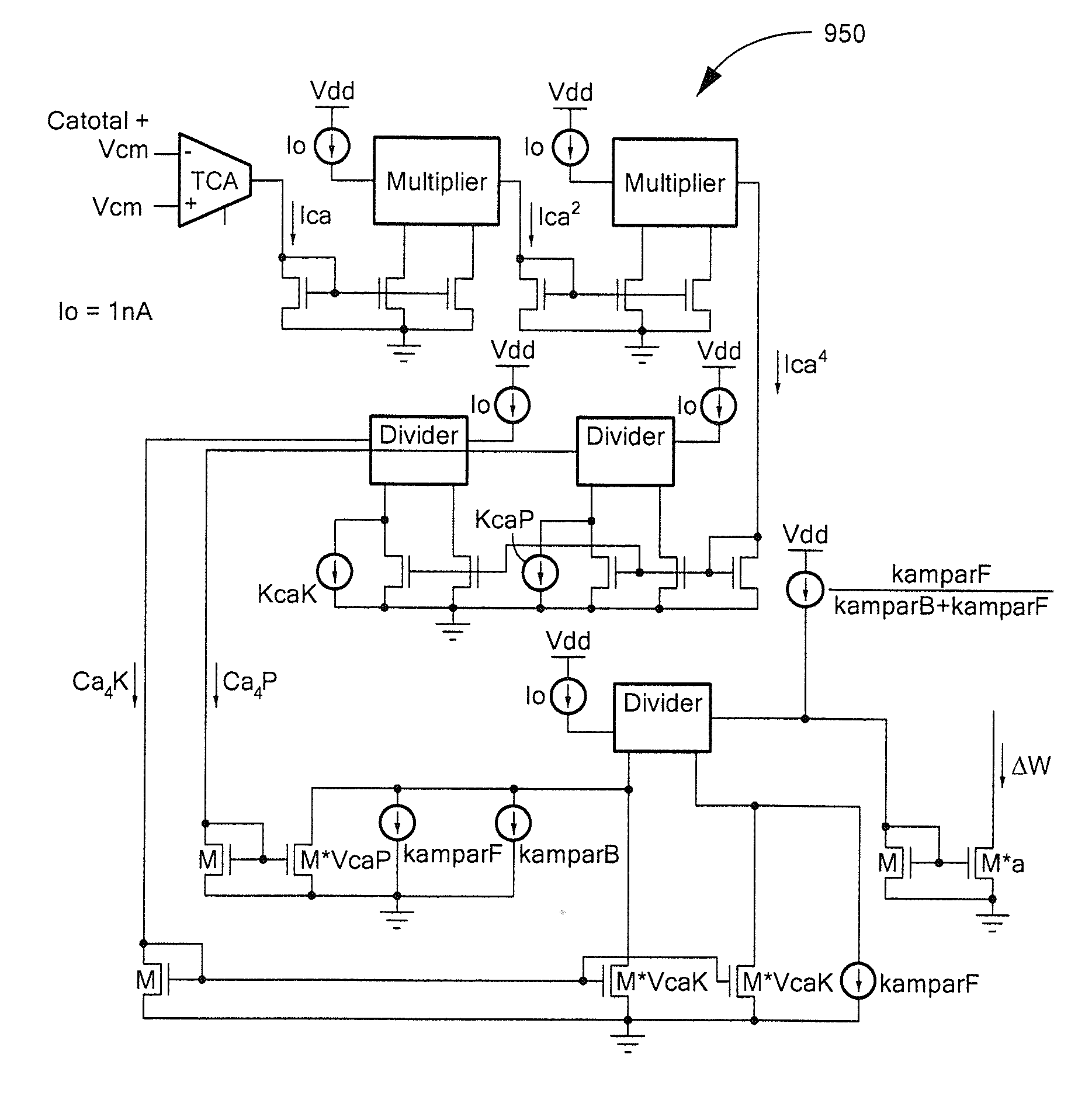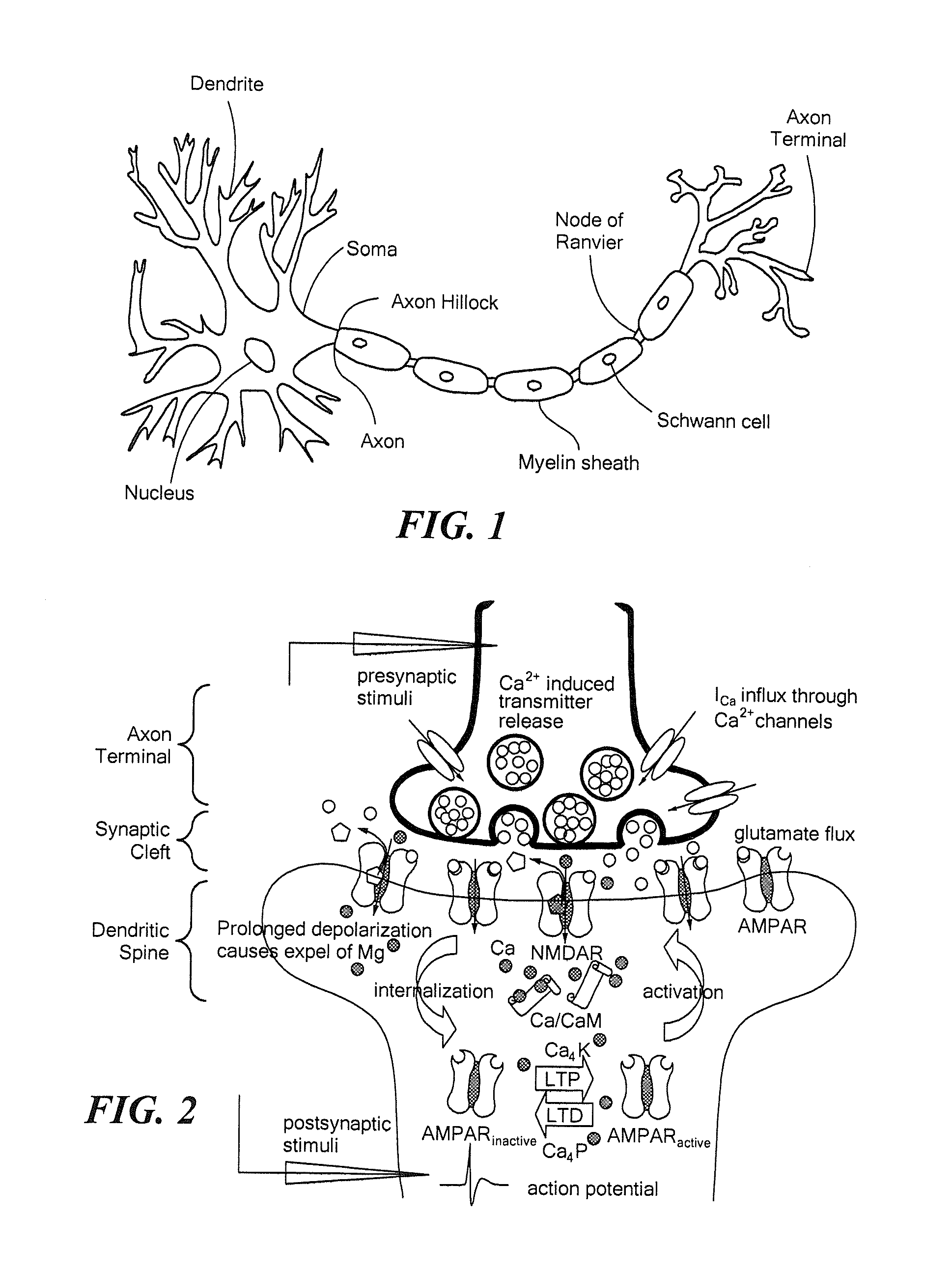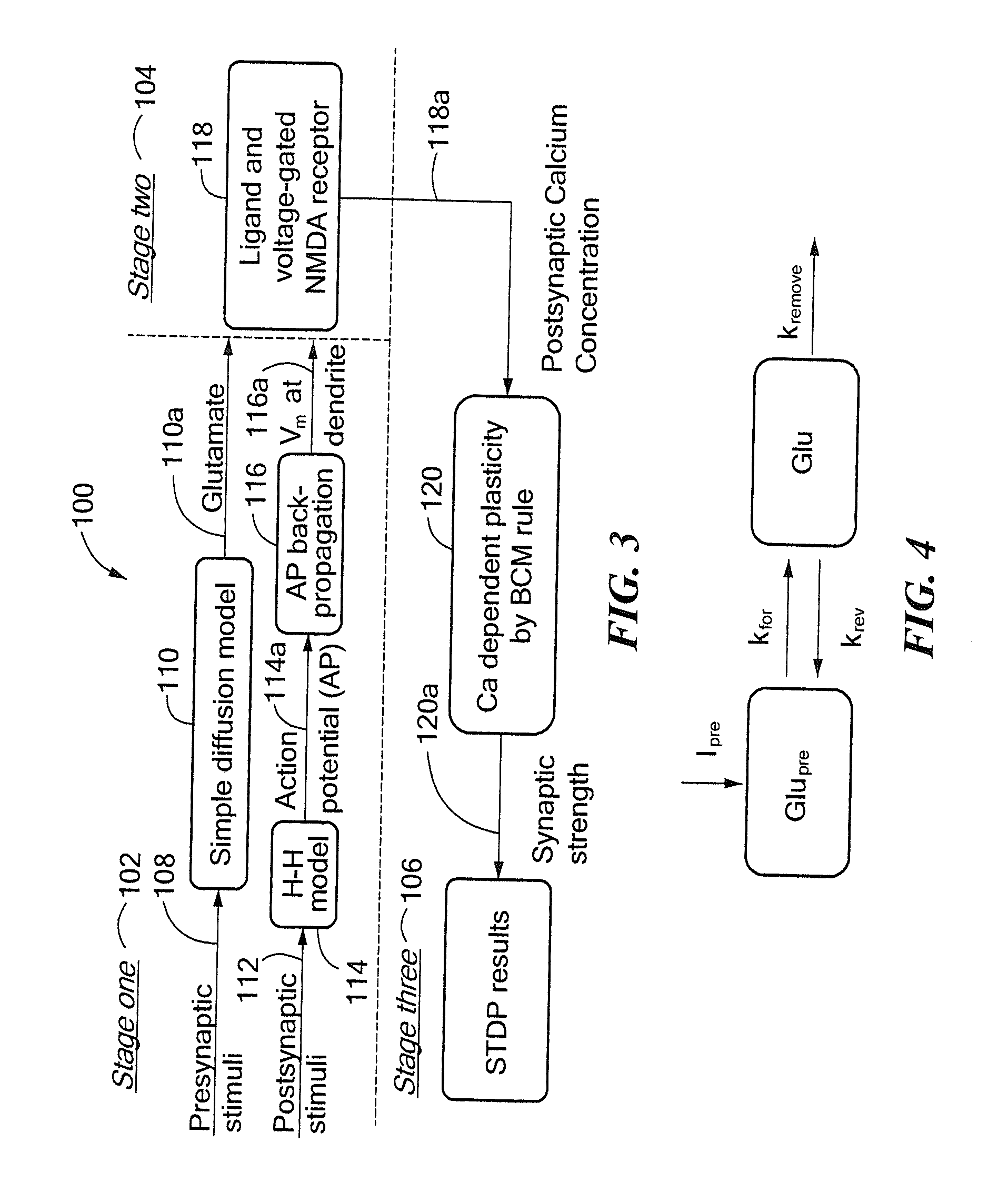Circuits and Methods Representative of Spike Timing Dependent Plasticity of Neurons
a technology of plasticity and neurons, applied in biological neural network models, instruments, digital computers, etc., can solve the problems of inability of existing circuits and techniques to emulate spike timing dependent plasticity in a way, inability of existing circuits and techniques to provide a relationship between bcm rule and stdp, and inability of existing circuits and techniques to emulate all of the different types of stdp
- Summary
- Abstract
- Description
- Claims
- Application Information
AI Technical Summary
Benefits of technology
Problems solved by technology
Method used
Image
Examples
Embodiment Construction
[0067]Before describing the present invention, some introductory concepts and terminology are explained. As used herein, the term “Bienenstock-Cooper-Munro rule,” or “BCM rule” or “BCM curve” for short, is used to describe a rule or curve relating a frequency of neuronal stimulation to a change of neural plasticity (i.e., neural strength). It will be shown below, for example, in FIGS. 9A and 9B, that there is also an equivalence between the frequency-based (or rate-based) BCM rule or curve and a rule or curve that relates a total postsynaptic calcium concentration to a change of neural plasticity (i.e., neural strength). Hence, it will become apparent that neural stimulation frequency can affect total postsynaptic calcium concentration.
[0068]Spike timing dependent synaptic plasticity (STDP) refers to a neuronal characteristic for which the efficacy of synaptic transmission is influenced by a relative timing between presynaptic and postsynaptic stimulation, i.e., between a presynapti...
PUM
 Login to View More
Login to View More Abstract
Description
Claims
Application Information
 Login to View More
Login to View More - R&D
- Intellectual Property
- Life Sciences
- Materials
- Tech Scout
- Unparalleled Data Quality
- Higher Quality Content
- 60% Fewer Hallucinations
Browse by: Latest US Patents, China's latest patents, Technical Efficacy Thesaurus, Application Domain, Technology Topic, Popular Technical Reports.
© 2025 PatSnap. All rights reserved.Legal|Privacy policy|Modern Slavery Act Transparency Statement|Sitemap|About US| Contact US: help@patsnap.com



